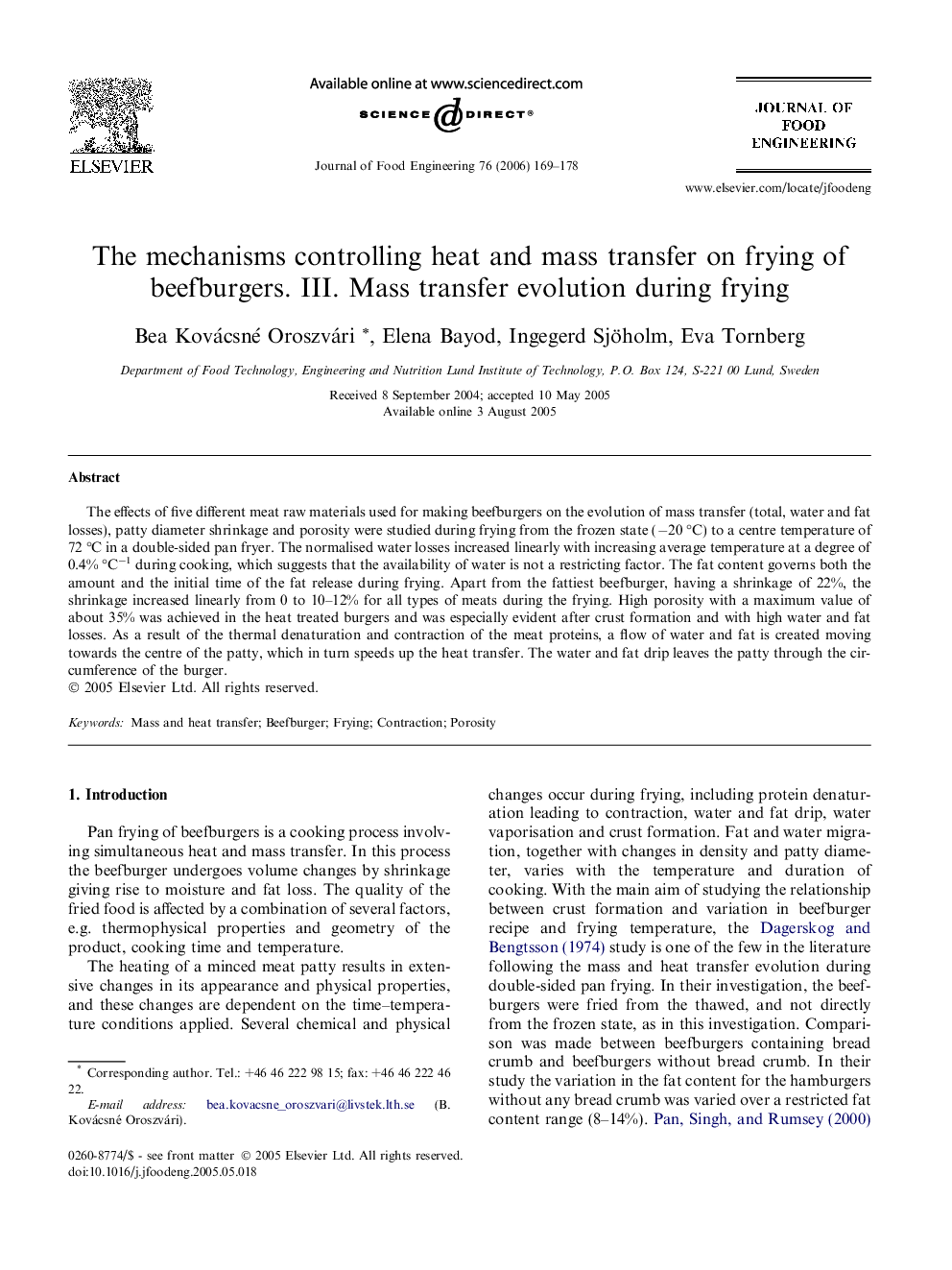| Article ID | Journal | Published Year | Pages | File Type |
|---|---|---|---|---|
| 226364 | Journal of Food Engineering | 2006 | 10 Pages |
The effects of five different meat raw materials used for making beefburgers on the evolution of mass transfer (total, water and fat losses), patty diameter shrinkage and porosity were studied during frying from the frozen state (−20 °C) to a centre temperature of 72 °C in a double-sided pan fryer. The normalised water losses increased linearly with increasing average temperature at a degree of 0.4% °C−1 during cooking, which suggests that the availability of water is not a restricting factor. The fat content governs both the amount and the initial time of the fat release during frying. Apart from the fattiest beefburger, having a shrinkage of 22%, the shrinkage increased linearly from 0 to 10–12% for all types of meats during the frying. High porosity with a maximum value of about 35% was achieved in the heat treated burgers and was especially evident after crust formation and with high water and fat losses. As a result of the thermal denaturation and contraction of the meat proteins, a flow of water and fat is created moving towards the centre of the patty, which in turn speeds up the heat transfer. The water and fat drip leaves the patty through the circumference of the burger.
